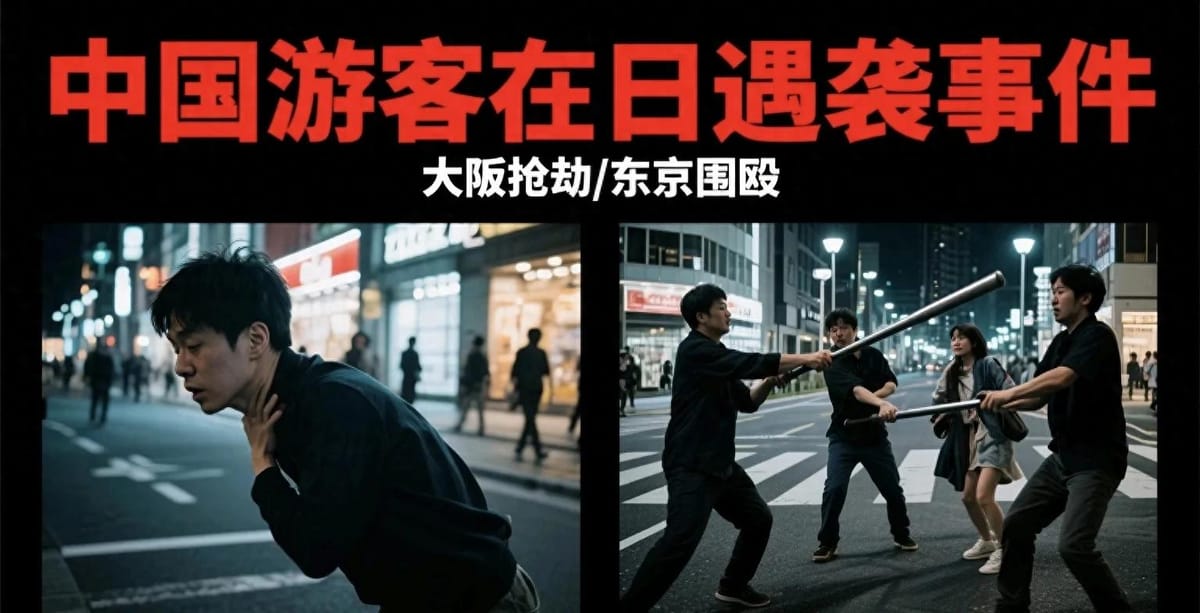19-Year-Old Chinese Student Robbed and Assaulted in Osaka
A 19-year-old Chinese student was robbed and assaulted in Osaka's Haginochaya district, highlighting public safety issues in the area.

Understanding the Incident in Osaka
On the evening of July 30th, a troubling event unfolded in the Haginochaya district of Nishi-ku, Osaka. A 19-year-old Chinese university student, visiting Japan for vacation, fell victim to a robbery and assault. Around 10:40 PM, while returning to his hotel with friends after a trip to a convenience store, the student was unexpectedly attacked from behind. The assailant put him in a headlock, stole his mobile phone and wallet, and caused a minor injury to the student's right elbow.
This incident raises an important question: how safe are certain neighborhoods in major cities like Osaka, especially for international visitors and students?
Haginochaya District: A Complex Neighborhood
Haginochaya is known for its mixed reputation. This neighborhood has a high concentration of homeless and unemployed residents, and local authorities have often pointed out challenges related to public safety and living conditions here. Yet, it is a neighborhood where many students come to study and explore Japanese culture.
The dual nature of this area makes it a place where safety concerns and day-to-day life coexist uneasily. While many residents and visitors have peaceful experiences, isolated incidents like this robbery highlight vulnerabilities that need addressing.
The Suspect and Legal Response
The suspect, identified as a 32-year-old unemployed Japanese man, was arrested shortly after the incident. Interestingly, he has remained silent during questioning, offering only a "no comment" response. Police investigations are ongoing to clarify the motives and circumstances behind this unprovoked attack.
This silence raises concerns about the challenges law enforcement faces when dealing with similar crimes in neighborhoods with complex social dynamics. It also spotlights the plight of residents suffering from unemployment and homelessness — factors that sometimes correlate with increased crime rates.
Broader Safety Implications for Students and Travelers
With more international students and tourists visiting cities like Osaka, incidents such as this emphasize the need for careful personal safety measures. While Japan is often viewed as a safe travel destination, no place is free from risks.
Visitors are encouraged to stay alert, avoid isolated areas late at night, and travel in groups whenever possible. Local universities and community organizations can also play vital roles in educating students about safety practices and providing support when incidents occur.
Conclusion: Reflecting on Urban Safety Challenges
This recent case of robbery and assault on a young student in Osaka's Haginochaya district is a reminder that public safety issues persist even in countries perceived as safe. It calls for greater awareness, community cooperation, and effective policing to protect vulnerable populations like students and tourists.
Addressing such incidents requires a balanced approach—tackling the root causes like homelessness and unemployment, while promoting safe, welcoming environments for all city residents and visitors.
Ultimately, this incident should not only spark concern but also motivate action to improve safety and community resilience in urban spaces.
Stay safe, stay aware, and let’s work together to build safer cities for everyone. 🏙️🔒




